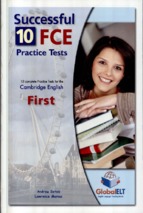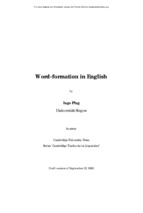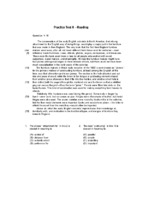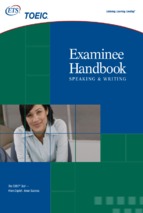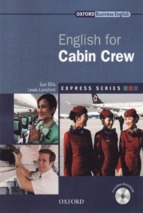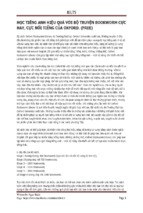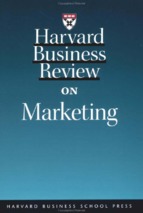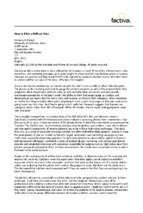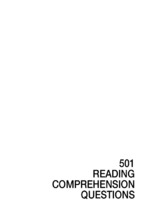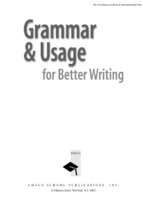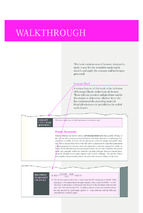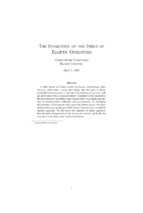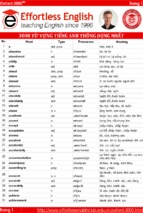ffirs.indd 2
13-05-2014 07:55:13
2014
Wiley
C PAexc e l
®
EXAM REVIEW
STUDY GUIDE
JULY 2014
ffirs.indd 1
13-05-2014 07:55:13
ffirs.indd 2
13-05-2014 07:55:13
2014
Wiley
C PA e xc e l
®
EXAM REVIEW
STUDY GUIDE
JULY 2014
FINANCIAL ACCOUNTING
AND R EPORTING
O. Ray Whittington, CPA, PhD
ffirs.indd 3
13-05-2014 07:55:13
Cover Design: John Wiley & Sons, Inc.
Cover image: © iStockphoto/turtleteeth
The following items, copyright © by the American Institute of Certified Public Accountants, Inc., are reprinted (or adapted) with
permission.
1. Material from Uniform CPA Examination Questions and Answers, 1978 through 2014.
2. Information for Uniform CPA Examination Candidates, Board of Examiners, 2013.
3. �Example financial statements from Industry Audit Guides: Audits of Colleges and Universities, Audits of Voluntary Health and
Welfare Organizations, and Audits of Providers of Health Care Services.
4. Example of Statement of Activity from SOP 78-10.
Material from the Certified Internal Auditor Examination, Copyright © 1994 through 1997 by the Institute of Internal Auditors, Inc., are
reprinted and/or adapted by permission.
Material from the Certified Management Accountant Examinations, Copyright © 1993 through 1997 by the Institute of Certified
Management Accountants are reprinted and/or adapted by permission.
Reproduction and adaptation of pronouncements, copyright © Financial Accounting Standards Board, Norwalk, Connecticut
06856-5116, with permission.
Reproduction of “Combined Statement of Revenues, Expenditures, and Changes in Fund Balances–All Governmental Fund Types and
Expendable Trust Funds,” copyright © Governmental Accounting Standards Board, Norwalk, Connecticut 06856-5116, with permission.
Statement of changes in fund balances for an educational institution from College and University Business Administration with
permission of the National Association of College and University Business Officers.
Copyright © 2014 by John Wiley & Sons, Inc. All rights reserved.
Published by John Wiley & Sons, Inc., Hoboken, New Jersey.
Published simultaneously in Canada.
No part of this publication may be reproduced, stored in a retrieval system or transmitted in any form or by any means, electronic,
mechanical, photocopying, recording, scanning or otherwise, except as permitted under Section 107 or 108 of the 1976 United States
Copyright Act, without either the prior written permission of the Publisher, or authorization through payment of the appropriate
per-copy fee to the Copyright Clearance Center, 222 Rosewood Drive, Danvers, MA 01923, 978-750-8400, fax 978-646-8600, or on the
Web at www.copyright.com. Requests to the Publisher for permission should be addressed to the Permissions Department, John Wiley &
Sons, Inc., 111 River Street, Hoboken, NJ 07030, 201-748-6011, fax 201-748-6008, or online at http://www.wiley.com/go/
permissions.
Limit of Liability/Disclaimer of Warranty: While the publisher and author have used their best efforts in preparing this book, they
make no representations or warranties with respect to the accuracy or completeness of the contents of this book and specifically
disclaim any implied warranties of merchantability or fitness for a particular purpose. No warranty may be created or extended by
sales representatives or written sales materials. The advice and strategies contained herein may not be suitable for your situation. You
should consult with a professional where appropriate. Neither the publisher nor author shall be liable for any loss of profit or any other
commercial damages, including but not limited to special, incidental, consequential, or other damages.
For general information on our other products and services or for technical support, please contact our Customer Care Department
within the US at 800-762-2974, outside the US at 317-572-3993 or fax 317-572-4002.
Wiley also publishes its books in a variety of electronic formats. Some content that appears in print may not be available in electronic
books. For more information about Wiley products, visit our Web site at www.wiley.com.
ISBN 978-1-118-91787-9 (paperback); 978-1-118-94789-0 (ebk); 978-1-118-94790-6 (ebk)
Printed in the United States of America
10 9 8 7 6 5 4 3 2 1
ffirs.indd 4
13-05-2014 07:55:13
CONTENTS
Preface�vii
About the Author�
ix
About the Contributor�
ix
INTRODUCTION�1
Chapter 1: Beginning Your CPA Review Program�
3
Chapter 2: Examination Grading�
17
Chapter 3: The Solutions Approach�
19
Chapter 4: Taking The Examination�
27
Chapter 5: Exam Content Overview�
31
FINANCIAL ACCOUNTING AND REPORTING�
39
Module 9: Basic Theory and Financial Reporting�41
Module 10: Inventory �
217
Module 11: Fixed Assets �
267
Module 12: Monetary Current Assets and Current Liabilities �
329
Module 13: Present Value �
395
Module 14: Deferred Taxes �
537
Module 15: Stockholders’ Equity �
577
Module 16: Investments �
639
Module 17: Statement of Cash Flows �
687
Module 18: Business Combinations and Consolidations �
725
Module 19: Derivative Instruments and Hedging Activities �
785
Module 20: Miscellaneous �
825
Module 21: Governmental (State and Local) Accounting�
897
Module 22: Not-for-Profit Accounting �
983
v
ftoc.indd 5
13-05-2014 16:17:32
APPENDICES�1017
Appendix A: Outlines of Accounting Pronouncements�
1019
Appendix B: Financial Accounting and Reporting
Sample Examination�
1137
Appendix C: Sample Financial Accounting and Reporting
Testlet Released by AICPA�
1171
Appendix D: 2014 Released AICPA Questions for
Financial Accounting and Reporting�
1179
INDEX�1201
vi
ftoc.indd 6
13-05-2014 16:17:32
PREFACE
Passing the CPA exam upon your first attempt is possible! The
Wiley CPAexcel Exam Review 2014 Study Guide July: Financial
Accounting and Reporting preparation materials provide you with
the necessary materials (visit our website at www.wiley.com/cpa for
more information). It’s up to you to add the hard work and commitment.
Together we can beat the pass rate on each section of about 50%. All
Wiley CPAexcel products are continuously updated to provide you
with the most comprehensive and complete knowledge base. Choose
your products from the Wiley preparation materials and you can
proceed confidently. You can select support materials that are
exam-based and user-friendly. You can select products that will
help you pass!
Remaining current is one of the keys to examination success.
Here is a list of what’s new in this edition of the Wiley CPAexcel
Exam Review 2014 Study Guide July: Financial Accounting and
Reporting text.
Don’t forget to
visit our website
at
www.wiley.com/cpa
for supplements
and updates.
• The new AICPA Content Specification Outlines on Financial
Accounting and Reporting for the computerized CPA
Examination beginning in 2014
• AICPA questions released in 2014
• The new task-based simulations
• Complete coverage of standards, especially
• The newest FASB accounting standards
• International accounting standards
• SEC reporting requirements
The objective of this work is to provide you with the
knowledge to pass the Financial Accounting and Reporting portion
of the Uniform Certified Public Accounting (CPA) Exam. The text
is divided up into 14 areas of study called modules. Each module
contains written text with discussion, examples, and demonstrations
of the key exam concepts. Following each text area, actual American
Institute of Certified Public Accountants (AICPA) unofficial
questions and answers are presented to test your knowledge. We are
indebted to the AICPA for permission to reproduce and adapt
examination materials from past examinations. Author-constructed
questions and simulations are provided for new areas or areas that
require updating. All author-constructed questions and simulations
are modeled after AICPA question formats. The multiple-choice
questions are grouped into topical areas, giving candidates a chance
to assess their areas of strength and weakness. Selection and
inclusion of topical content is based upon current AICPA Content
Specification Outlines. Only testable topics are presented. If the CPA
exam does not test it, this text does not present it.
The CPA exam is one of the toughest exams you will ever take. It
will not be easy. But if you follow our guidelines and focus on your
goal, you will be thrilled with what you can accomplish.
Ray Whittington
July 2014
vii
fpref.indd 7
13-05-2014 07:56:11
fpref.indd 8
13-05-2014 07:56:11
ABOUT THE AUTHOR
Ray Whittington, PhD, CPA, CMA, CIA, is the dean of the
Driehaus College of Business at DePaul University. Prior to join
ing the faculty at DePaul, Professor Whittington was the Director
of Accountancy at San Diego State University. From 1989 through
1991, he was the Director of Auditing Research for the American
Institute of Certified Public Accountants (AICPA), and he previously
was on the audit staff of KPMG. He previously served as a member
of the Auditing Standards Board of the AICPA and as a member of
the Accounting and Review Services Committee and the Board of
Regents of the Institute of Internal Auditors. Professor Whittington
has published numerous textbooks, articles, monographs, and
continuing education courses.
ABOUT THE CONTRIBUTOR
Natalie T. Churyk, PhD, CPA, is the Caterpillar Professor of
Accountancy at Northern Illinois University. She teaches in the
undergraduate and L.M.A.S. programs as well as developing and
delivering continuing professional education in Northern Illinois
University’s CPA Review program. Professor Churyk has published
in professional and academic journals. She serves on state and
national committees relating to education and student initiatives and
is a member of several editorial review boards. Professor Churyk is
a coauthor of three textbooks: Accounting and Auditing Research:
Tools and Strategies, Mastering the Codification and eIFRS: A Case
Approach, and Accounting and Auditing Research and Databases:
Practitioner’s Desk Reference.
ix
flast.indd 9
13-05-2014 07:55:45
flast.indd 10
13-05-2014 07:55:45
INTRODUCTION
To maximize the efficiency of your review
program, begin by studying (not merely reading)
Chapters 1 through 5 of this volume. They have
been carefully organized and written to provide
you with important information to assist you in
successfully completing the Financial Accounting
and Reporting section of the CPA exam. Beyond
providing a comprehensive outline to help you
organize the material tested on the Financial
Accounting and Reporting section of the exam,
these chapters will assist you in organizing a study
program to prepare for the Financial Accounting
and Reporting portion. Self-discipline is essential.
Chapter 1: Beginning Your CPA Review
Program
3
Chapter 2: Examination Grading
17
Chapter 3: The Solutions Approach
19
Chapter 4: Taking the Examination
27
Chapter 5: Exam Content Overview
31
1
c01.indd 1
13-05-2014 07:21:03
c01.indd 2
13-05-2014 07:21:03
Chapter 1: Beginning Your CPA Review Program
GENERAL COMMENTS ON THE EXAMINATION
The Uniform CPA Examination is delivered using computer-based testing (CBT). Computer-based testing has several
advantages. You may take the exam one section at a time. As a result, your studies can be focused on that one section,
improving your chances for success. In addition, you may take the exam on your schedule, eight months of the year, six
days a week, and in the morning or in the afternoon.
Successful completion of the Uniform CPA Examination in Financial Accounting and Reporting is an attainable goal.
Keep this point foremost in your mind as you study the first four chapters in this volume and develop your study plan.
Purpose of the Examination1
The Uniform CPA Examination is designed to test the entry-level knowledge and skills necessary to protect the public
interest. An entry-level CPA is defined as one who has fulfilled the applicable jurisdiction’s educational requirements and
has the knowledge and skills typically possessed by a person with up to two years of experience. These knowledge and
skills were identified through a Practice Analysis performed in 2008, which served as a basis for the development of the
content specifications for the exam beginning in 2014.
The CPA examination is one of many screening devices to assure the competence of those licensed to perform the
attest function and to render professional accounting services. Other screening devices include educational requirements,
ethics examinations, and work experience.
The examination appears to test the material covered in accounting programs of the better business schools. It also
appears to be based upon the body of knowledge essential for the practice of public accounting and the auditor of a
medium-sized client. Since the examination is primarily a textbook or academic examination, you should plan on taking it
as soon as possible after completing your accounting education.
Examination Content
Guidance concerning topical content of the Financial Accounting and Reporting section of the CPA exam can be found in
a document prepared by the Board of Examiners of the AICPA entitled Content and Skill Specifications for the Uniform
CPA Exam. We have included the content outlines for Financial Accounting and Reporting in Chapter 5. These outlines
should be used as an indication of the topics’ relative emphasis on the exam.
The Board’s objective in preparing this detailed listing of topics tested on the exam is to help “in assuring the continuing validity and reliability of the Uniform CPA Examination.” These outlines are an excellent source of guidance concerning
the areas and the emphasis to be given each area on future exams.
The new Content and Skill Specification Outlines for the CPA examination, including the testing of International
Financial Reporting Standards (IFRS), went into effect January 1, 2013. In addition, the AICPA adopted CBT-e, which is a
new computer platform. The major change from your standpoint is that simulations are smaller in size and a larger number
of these “task-based simulations” are included on the Auditing and Attestation, Financial Accounting and Reporting, and
Regulation exams. In addition, all simulations that test writing skills have been moved to the Business Environment and
Concepts exam.
New accounting and auditing pronouncements, including those in the governmental and not-for-profit areas, are tested
in the testing window six months after the pronouncement’s effective date. If early application is permitted, a pronouncement is tested six months after the issuance date; candidates are also responsible for the old pronouncement until it is
superseded. The AICPA posts content changes regularly on its Internet site at www.cpa-exam.org.
Nondisclosure and Computerization of Examination
Beginning May 1996, the Uniform CPA Examination became nondisclosed. For each exam section, candidates are
required to agree to a Statement of Confidentiality, which states that they will not divulge the nature and content of any
More information may be obtained from the AICPA’s Uniform CPA Examination Candidate Bulletin, which you can find on the
AICPA’s website at www.cpa-exam.org.
1 �
3
c01.indd 3
13-05-2014 07:21:03
Chapter 1: Beginning Your CPA Review Program
4
exam question. The CPA exam is computer-based, and candidates take the exam at Prometric sites in the 55 jurisdictions
in which the exam is offered. The CPA exam is offered continually during the testing windows shown below.
Testing Window
(Exam Available)
AICPA
Review and Update
(Exam Unavailable)
January through February
April through May
July through August
October through November
March
June
September
December
One or more exam sections may be taken during any exam window, and the sections may be taken in any desired order.
However, no candidate will be allowed to sit for the same section more than once during any given testing window.
In addition, a candidate must pass all four sections of the CPA exam within a “rolling” eighteen-month period, which
begins on the date he or she passes a section. In other words, you must pass the other three sections of the exam within
eighteen months of when you pass the first section. If you do not pass all sections within the eighteen-month period, credit
for any section(s) passed outside the eighteen-month period will expire and the section(s) must be retaken.
Types of Questions
The computer-based Uniform CPA Examination consists of two basic question formats.
1. Multiple-Choice—questions requiring the selection of one of four responses to a short scenario.
2. Task-Based Simulations—short case studies that are used to assess knowledge and skills in a context
approximating that found on the job through the use of realistic scenarios and tasks, and access to normally
available and familiar resources.
The multiple-choice questions are much like the ones that have constituted a majority of the CPA examination for years.
And the good news is that these types of questions constitute 60% of the Financial Accounting and Reporting section.
Process for Sitting for the Examination
While there are some variations in the process from state to state, the basic process for sitting for the CPA examination
may be described as follows:
1.
2.
3.
4.
5.
6.
7.
Apply to take the examination (request, complete, and submit an application).
Payment of examination fees.
Review the tutorial and sample tests.
Receive your Notice to Schedule.
Schedule your examination.
Take your examination(s).
Receive your Score Report(s).
Applying to Take the Examination
The right to practice public accounting as a CPA is governed by individual state statutes. While some rules regarding the
practice of public accounting vary from jurisdiction to jurisdiction, all State Boards of Accountancy use the Uniform CPA
Examination and AICPA advisory grading service as one of the requirements to practice public accounting. The State
Boards of Accountancy determine the requirements to sit for the exam (e.g., education requirements and fees). For comparisons of requirements for various state boards and those policies that are uniform across jurisdictions, you should refer
to the website of the National Association of State Boards of Accountancy (NASBA) at www.nasba.org.
A frequent problem candidates encounter is failure to apply by the deadline. Apply to sit for the examination early.
Also, you should use extreme care in filling out the application and mailing required materials to your State Board
of Accountancy. If possible, have a friend review your completed application before mailing with check and other documentation. The name on your application must appear exactly the same as it appears on the identification you plan to use
at the testing center. Candidates miss a particular CPA examination window simply because of minor technical details that
were overlooked (checks not signed, items not enclosed, question not answered on application, etc.). Because of the very
high volume of applications received in the more populous states, the administrative staff does not have time to call
or write to correct minor details and will simply reject your application.
c01.indd 4
13-05-2014 07:21:03
Chapter 1: Beginning Your CPA Review Program
5
The NASBA website has links to the registration information for all 55 jurisdictions. It is possible for candidates to sit
for the examination at a Prometric site in any state or territory. Candidates desiring to do so should refer to the registration
information for the applicable State Board of Accountancy.
International Applicants
International administration of the CPA Exam is currently offered in Brazil, Japan, Bahrain, Kuwait, Lebanon, and the
United Arab Emirates. If you live in one of these testing locations, or other select countries, you may be able to take
the Exam without traveling to the U.S. The Exam is only offered in English, and is the same computerized test as the
one administered in the U.S. You are required to meet the same eligibility requirements and complete the same licensure requirements as your U.S. counterparts.
Applicants from countries other than the U.S. must follow the same basic steps as U.S. applicants. This means they
must select the jurisdiction in which they wish to qualify and file an application with the board of accountancy (or its designated agent) in that jurisdiction. Any special instructions for candidates who have completed their education outside the
U.S. are included in the board of accountancy requirements. For more information on the international administration of
the CPA Examination, visit the International section of the NASBA website.
Obtaining the Notice to Schedule
Once your application has been processed and you have paid all fees, you will receive a Notice to Schedule (NTS) from
NASBA. The NTS will list the section(s) of the examination that you are approved to take. When you receive the NTS,
verify that all information is correct. Be certain that the name appearing on the NTS matches EXACTLY the name on
the identification documents that you will use during check-in at the testing center. If the information is incorrect or
the name does not match, immediately contact your board of accountancy or its designated agent to request a correction. You must bring your NTS with you to the examination.
Exam Scheduling
Once you have been cleared to take the exam by the applicable state board, you will receive by mail a Notice to Schedule
(NTS) and may then schedule to sit for one or more sections of the exam.
You have the following two options for scheduling your examination:
1.
Visit www.prometric.com/cpa on the Internet
This is the easiest and quickest way to schedule an examination appointment (or cancel and reschedule an
appointment, if necessary). Simply go to the website, select “schedule your test,” and follow the directions. It is
advised that you print and keep for your records the confirmation number for your appointment.
2.
Call 800-580-9648 (Candidate Services Call Center)
Before you call, you must have your NTS in front of you, and have in mind several times, dates, and locations
that would work for you. You will not receive written confirmation of your appointment. Be sure to write down the
date, time, location, and confirmation number for each of your appointments.
You should also be aware that if you have to cancel or reschedule your appointment, you may be subject to a cancellation/
rescheduling fee. The AICPA’s Uniform CPA Examination Candidate Bulletin lists the rescheduling and cancellation fees.
To assure that you get your desired location and time period, it is imperative that you schedule early. To get your
first choice of dates, you are advised to schedule at least 45 days in advance. You will not be scheduled for an exam
fewer than 5 days before testing.
ATTRIBUTES OF EXAMINATION SUCCESS
Your primary objective in preparing for the Financial Accounting and Reporting section is to pass. Other objectives such
as learning new and reviewing old material should be considered secondary. The six attributes of examination success
discussed below are essential. You should study the attributes and work toward achieving/developing each of them before
taking the examination.
1.
Knowledge of Material
Two points are relevant to “knowledge of material” as an attribute of examination success. First, there is a
distinct difference between being familiar with material and knowing the material. Frequently candidates confuse
familiarity with knowledge. Can you remember when you just could not answer an examination question or did
c01.indd 5
13-05-2014 07:21:03
6
Chapter 1: Beginning Your CPA Review Program
poorly on an examination, but maintained to yourself or your instructor that you knew the material? You probably
were only familiar with the material. On the CPA examination, familiarity is insufficient; you must know the
material. Remember the exam will test your ability to analyze data, make judgments, communicate, perform
research, and demonstrate understanding of the material. For example, you may be familiar with the concepts in
accounting for leases (SFAS 13), but can you compute the present value of an annuity due under a lease agreement
and record entries for the lessee and lessor? Once again, a major concern must be to know the material rather than
just being familiar with it. Knowledgeable discussion of the material is required on the CPA examination. Second,
the Financial Accounting and Reporting exam tests a literally overwhelming amount of material at a rigorous
level. From an undergraduate point of view, the CPA examination in Financial Accounting and Reporting includes
material from the following courses:
Intermediate Financial (usually two semesters)
Advanced Financial
Furthermore, as noted earlier, the CPA exam will test new material, sometimes as early as six months after
issuance. In other words, you are not only responsible for material in the above courses, but also for all new
developments in each of these areas.
This text contains outlines of accounting topics from FASB pronouncements, financial accounting courses, etc.
Return to the original material (e.g., FASB, your accounting textbooks, etc.) only if the outlines do not reinforce
material you already know.
2.
Commitment to Exam Preparation
Your preparation for the CPA exam should begin at least two months prior to the date you plan to schedule
your seating for an exam section. If you plan to take more than one section, you should start earlier. Over the
course of your preparation, you will experience many peaks and valleys. There will be days when you feel
completely prepared and there will also be days when you feel totally overwhelmed. This is not unusual and, in
fact, should be expected.
The CPA exam is a very difficult and challenging exam. How many times in your college career did you study
months for an exam? Probably not too many. Therefore, candidates need to remain focused on the objective—
succeeding on the CPA exam.
Develop a personal study plan so that you are reviewing material daily. Of course, you should schedule an
occasional study break to help you relax, but don’t schedule too many breaks. Candidates who dedicate themselves
to studying have a much greater chance of going through this process only one time. On the other hand, a lack of
focus and piecemeal preparation will only extend the process over a number of exam sittings.
3.
Solutions Approach
The solutions approach is a systematic approach to solving the questions and simulations found on the CPA
examination. Many candidates know the material fairly well when they sit for the CPA exam, but they do not
know how to take the examination. Candidates generally neither work nor answer problems efficiently in terms
of time or grades. The solutions approach permits you to avoid drawing “blanks” on CPA exam problems; using
the solutions approach coupled with grading insights (see below) allows you to pick up a sizable number of points
on test material with which you are not familiar. Chapter 3 outlines the solutions approach for multiple-choice
questions and task-based simulations.
4.
Grading Insights
Your score on each section of the exam is determined by the sum of points assigned to individual questions and
simulations. Thus, you must attempt to maximize your points on each individual item.
The multiple-choice questions within each section are organized into three groups which are referred to
as testlets. Each multiple-choice testlet is comprised of approximately 30 multiple-choice questions. The
multiple-choice testlets vary in overall difficulty A testlet is labeled either “medium difficult” or “difficult”
based on its makeup. A “difficult” testlet has a higher percentage of hard questions than a “medium difficult”
testlet. Every candidate’s first multiple-choice testlet in each section will be a “medium difficult” testlet. If a
candidate scores well on the first testlet, he or she will receive a “difficult” second testlet. Candidates that do
not perform well on the first testlet receive a second “medium difficult” testlet. Because the scoring procedure
takes the difficulty of the testlet into account, candidates are scored fairly regardless of the type of testlets
they receive.
Each multiple-choice testlet contains “operational” and “pretest” questions. The operational questions are the
only ones that are used to determine your score. Pretest questions are not scored; they are being tested for future
use as operational questions. However, you have no way of knowing which questions are operational and which
questions are pretest questions. Therefore, you must approach each question as if it will be used to determine
your grade.
c01.indd 6
13-05-2014 07:21:03
Chapter 1: Beginning Your CPA Review Program
7
Task-based simulations include more extensive scenarios and requirements. For example, the requirements may
involve calculations, spreadsheet completion, journal entries, or research. The points assigned to the requirements
will vary according to their difficulty. The task-based simulations make use of a number of commonly used tools
such as spreadsheets and electronic research databases. Therefore, you need to become proficient in the use of
these tools to maximize your score on the simulations.
CPA Exam scores are reported on a scale from 0 to 99. The total score is not a percent correct score. It is a
combination of scores from the multiple-choice and simulation portions of the exam considering the relative
difficulty of the items. A total score of 75 is required to pass each section.
The AICPA includes a tutorial and sample examinations on its website that allow you to get experience with
the use of the actual computer tools used on the CPA exam. Also, more experience with computer testing can be
obtained by using Wiley CPAexcel Exam Review Test Bank.
5.
Examination Strategy
Prior to sitting for the examination, it is important to develop an examination strategy (i.e., an approach to
working efficiently throughout the exam.). Your ability to cope successfully with the 4 hours of examination in
Financial Accounting and Reporting can be improved by
a. Recognizing the importance and usefulness of an examination strategy
b. Using Chapter 4, Taking the Examination, and previous examination experience to develop a “personal
strategy” for the exam
c. Testing your “personal strategy” on example examination questions under conditions similar to those at the test
centers (using similar tools and databases and with a time limit)
6.
Examination Confidence
You need confidence to endure the physical and mental demands of 4 hours of problem solving under
tremendous pressure. Examination confidence results from proper preparation for the exam, which includes
mastering the first five attributes of examination success. Examination confidence is necessary to enable you to
overcome the initial frustration with problems for which you may not be specifically prepared.
This study manual, when properly used, contributes to your examination confidence. Build confidence by
completing the questions contained herein.
Common Candidate Mistakes
The CPA Exam is a formidable hurdle in your accounting career. With a pass rate of about 40% on each section, the level
of difficulty is obvious. The good news, though, is that about 75% of all candidates (first-time and reexam) sitting for each
examination eventually pass. The authors believe that the first-time pass rate could be higher if candidates would be more
careful. Seven common mistakes that many candidates make are
1.
2.
3.
4.
Failure to understand the exam question requirements
Misunderstanding the supporting text of the problem
Lack of knowledge of material tested, especially recently issued pronouncements
Failure to develop proficiency with computer-based testing and practice tools such as electronic research databases
and spreadsheets
5. Inability to apply the solutions approach
6. Lack of an exam strategy (e.g., allocation of time)
7. Sloppiness and logical errors
These mistakes are not mutually exclusive. Candidates may commit one or more of the above items. Remind yourself
that when you decrease the number of common mistakes, you increase your chances of successfully becoming a CPA.
Take the time to read carefully the exam question requirements. Do not jump into a quick start, only to later find out that
you didn’t understand what information the examiners were asking for. Read slowly and carefully. Take time to recall your
knowledge. Respond to the question asked. Apply an exam strategy such as allocating your time among all question formats. Do not spend too much time on the multiple-choice testlets, leaving no time to spend on preparing your simulation
responses. Answer questions quickly but precisely, avoid common mistakes, and increase your score.
PURPOSE AND ORGANIZATION OF THIS REVIEW TEXTBOOK
This book is designed to help you prepare adequately for the Financial Accounting and Reporting examination. There is no
easy way to prepare for the successful completion of the CPA Examination; however, through the use of this manual, your
approach will be systematic and logical.
c01.indd 7
13-05-2014 07:21:03
Chapter 1: Beginning Your CPA Review Program
8
The objective of this book is to provide study materials supportive to CPA candidates. While no guarantees are made
concerning the success of those using this text, this book promotes efficient preparation by
1. Explaining how to maximize your score through analysis of examination grading and illustration of the solutions
approach.
2.
Defining areas tested through the use of the content specification outlines. Note that predictions of future exams
are not made. You should prepare yourself for all possible topics rather than gambling on the appearance of certain
questions.
3.
Organizing your study program by comprehensively outlining all of the subject matter tested on the examination
in 14 easy-to-use study modules. Each study module is a manageable task which facilitates your exam preparation.
Turn to Chapter 5 and peruse the contents to get a feel for the organization of this book.
4.
Providing CPA candidates with previous examination problems organized by topic (e.g., consolidations,
inventory, etc.) Questions have also been developed for new areas and in simulation format.
5.
Explaining the AICPA unofficial answers to the examination questions included in this text. The AICPA
publishes unofficial answers for all questions from exams administered prior to 1996 and for any released
questions from exams administered on or after May 1996. However, no explanation is made of the approach that
should have been applied to the examination questions to obtain these unofficial answers.
As you read the next few paragraphs which describe the contents of this book, flip through the chapters to gain a general familiarity with the book’s organization and contents. Chapters 2, 3, and 4 are to help you maximize your score.
Chapter 2 Examination Grading
Chapter 3 The Solutions Approach
Chapter 4 Taking the Examination
Chapters 2, 3, and 4 contain material that should be kept in mind throughout your study program. Refer back to them
frequently. Reread them for a final time just before you sit for the exam.
Chapter 5, Exam Content Overview, outlines and discusses the coverage of the Financial Accounting and Reporting
section of the CPA examination. It also contains the AICPA Content Specification Outlines for all the Financial
Accounting and Reporting topics tested in this section of the exam.
The Financial Accounting and Reporting Modules contain
1. AICPA Content Specification Outlines of the material tested on the Financial Accounting and Reporting section of
the exam
2. Multiple-choice questions
3. Task-based simulations
4. AICPA unofficial answers with the author’s explanations for the multiple-choice questions
5. Author’s answers to task-based simulations
Also included at the end of this text is a complete Sample Financial Accounting and Reporting CPA Examination.
The sample exam is included to enable candidates to gain experience in taking a “realistic” exam. While studying the
modules, the candidate can become accustomed to concentrating on fairly narrow topics. By working through the sample
examination near the end of their study programs, candidates will be better prepared for taking the actual examination.
Because some task-based simulations require the use of research materials, it is useful to have the appropriate electronic
research database (FASB Financial Accounting Research System or a printed copy of professional standards to complete
the sample examination). Remember that this research material will not be available to answer the multiple-choice
questions.
Other Textbooks
This text is a comprehensive compilation of study guides and outlines; it should not be necessary to supplement them with
accounting textbooks and other materials for most topics. You probably already have some of these texts or earlier editions
of them. In such a case, you must make the decision whether to replace them and trade familiarity (including notes therein,
etc.), with the cost and inconvenience of obtaining the newer texts containing a more updated presentation.
Before spending time and money acquiring new texts, begin your study program with Wiley CPAexcel Exam Review 2014
Study Guide July: Financial Accounting and Reporting to determine your need for supplemental texts.
c01.indd 8
13-05-2014 07:21:03
- Xem thêm -

